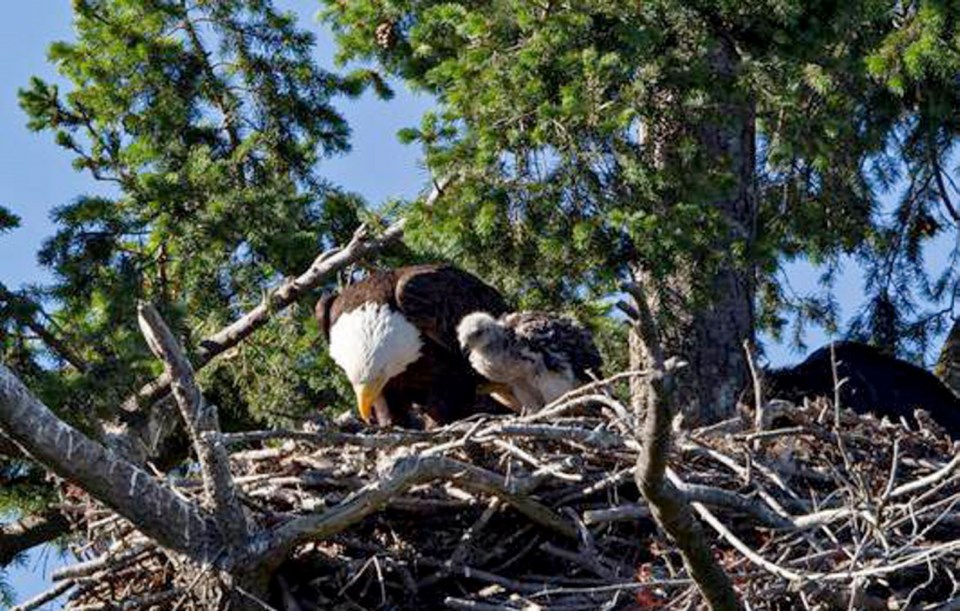The mystery of how a hawk chick came to be fostered by a family of bald eagles has deepened with news there might be — or have been — two hawk chicks in the nest.
Sheri Rypstra, a nature photographer, has a picture taken May 29 of two hawklets in the eagles’ nest.
“At the time I just thought: ‘OK, those are eagle chicks,’ ” said Rypstra in a telephone interview from her Sidney home. “I had never seen young eagles before.”
The blended family — two eagle parents, three eaglets and the much smaller and paler in colour hawk chick, or chicks — has been living in the nest near Summerset Place on Roberts Bay in Sidney.
News there might have been two chicks is bolstering one theory about how they all ended up together. Bird specialists believe the chicks were taken as prey, carried alive back to the nest as food for the eaglets. Once there, the hawklets started begging for food and the eagle parents responded to the begging stimulus.
Ann Nightingale of Rocky Point Bird Observatory, past president of the Victoria Natural History Society, said that’s most likely what happened, since the odds are against two hawk eggs being deposited in an eagle nest by accident, then both hatching.
David Bird, a McGill University wildlife professor now living on the Saanich Peninsula, said he was at the eagle nest on Thursday and saw only one hawk chick.
Bird said he watched the nest for about two hours and even saw the parents bring food and initiate a feeding frenzy.
“Something has happened to the other one, I’m pretty sure,” said Bird. “I would have seen two of them motoring around because they were all pretty hungry and excited.”
Somehow, he said, the hawk chick still managed to snatch some food from the larger eaglets and even begged some scraps from a parent.
Bird said it’s likely the eaglets killed the smaller hawk chick, or it just failed to snatch enough food and died. The remaining hawk still looks to be in good shape and will likely leave the nest within a week, he said, flying farther away every day and returning to the parents occasionally to beg for food.
After a few weeks, most birds of prey learn to hunt on their own.
Bird estimated that about half of newly fledged hawks survive into the following year.
Bird said he would love to put a marker band on the hawklet or even a transmitter.
“I would like to find out what happens to that little guy if he makes it out into the wild,” he said.
“Does he breed? Who does he breed with? Does he live in the local neighborhood or does he leave and return and try to court a bald eagle?
“I would just love to find out the end of that story.”



